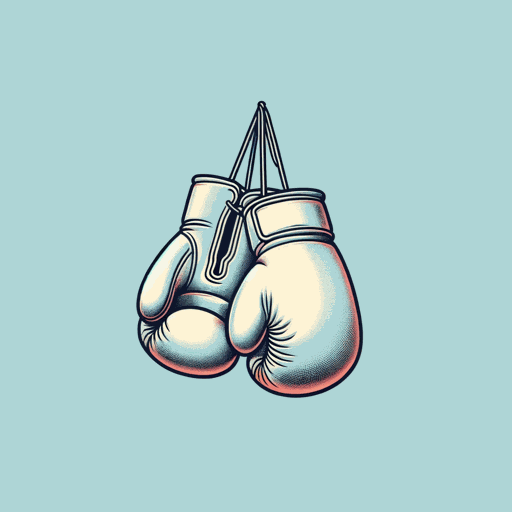56 pages • 1 hour read
Geoffrey CanadaFist, Stick, Knife, Gun: A Personal History of Violence
Nonfiction | Autobiography / Memoir | Adult | Published in 1995A modern alternative to SparkNotes and CliffsNotes, SuperSummary offers high-quality Study Guides with detailed chapter summaries and analysis of major themes, characters, and more. For select classroom titles, we also provide Teaching Guides with discussion and quiz questions to prompt student engagement.
Summary and Study Guide
Overview
Fist, Stick, Knife, Gun: A Personal History of Violence is the 1995 memoir by Geoffrey Canada that details his coming-of-age in the South Bronx. It follows Canada from the age of four to young manhood and describes the different and increasingly lethal forms that violence takes in his life.
The memoir begins with Canada living with his three older brothers and his newly-single mother. His father has recently left the family, and his mother is trying to survive without child support. Canada’s first encounter with violence is secondhand. It comes when Dan and John, his two oldest brothers, return home from the park one afternoon–Canada and his brother Reuben are still too young to go to the park–and tell their mother that John’s jacket was stolen by a playground bully. Their mother’s reaction to this news surprises Canada: she insists that Dan and John return to the park and get the jacket back. Dan and John reluctantly do so, and return ten minutes later with the jacket, shaken but triumphant. Canada is curious as to how they managed to master their fear when they had been so frightened earlier. This episode marks his first awareness of the codes of behavior that he will need to learn in order to survive in the Bronx.
Not long afterwards, Canada has his own direct encounter with violence, when he is sent by his mother to buy a can of beans at the local supermarket. A boy befriends him at the checkout line, and the two start walking home together. The boy then lures Canada into an alley and robs him of his (or rather, his mother’s) spare change.
Although Canada knows that he should defend himself as his brothers defended themselves earlier, he is unable to work up the courage to do so. Over the course of the memoir, however, he gradually learns how to fight back. Once he is old enough to start spending time alone on the street beneath his apartment, he is inducted into the rituals and hierarchies of young manhood in the Bronx. Fighting is a regular activity, even among boys who are friends; it is a way for these boys to prove themselves and to show that they are tough enough to survive and to protect one another. If a boy refuses to fight, they are often savagely beaten up, not by just one person but by the group. This is what happens to Butchie, a gentle older boy of Canada’s acquaintance, who is seen as “giving the block a bad rep” (44).
Canada is befriended by an older boy named Mike, who is both street smart and smart in school. He teaches Canada how to survive on the street while also validating his intellect and his love of learning. From Mike, Canada learns such skills as how to walk down the street in a way that shows that you are tough; how to duck, weave and punch when you are fighting; and how to appear cool and expressionless when you are frightened and confused. As he gets older, he sees increasingly serious violence around him. He also sees violent, out-of-control adults, as well as violent kids. On one occasion, he and Mike get into a dispute with a man whose car Canada has accidentally hit with a basketball; the dispute almost becomes violent, since Mike is carrying a knife, while the man (as Canada suspects) has a gun in the glove compartment of his car.
Later in the book, while Canada is playing sidewalk chess with a friend, he is suddenly caught in the middle of a chase between a numbers runner–a grown man–and a girl his own age; the numbers runner is holding a hand gun, and the girl a rifle. The girl accidentally points the gun at Canada, and he reacts by fleeing into the nearest building and hiding in the stairwell. Both these episodes illustrate how ordinary life in the Bronx can explode into threat and confrontation at any moment.
By the final chapter of the memoir, Canada has escaped to a small college in Maine, but still goes back to his old Bronx neighborhood during the holidays. There, he finds that gangs have become more and more prevalent, and he purchases a gun for protection. However, he finds that carrying a gun, while giving him a sense of security when he is walking down the streets of his old neighborhood, also makes him act in a way that is needlessly aggressive and defiant. Returning to his college in Maine, where there is no need for a weapon, also gives him perspective on the gun’s destructive potential. He eventually throws the gun away.
The book ends with an epilogue, in which the now-grown Canada describes his work at the Harlem Children’s Zone, a community organization. He expresses his belief that organizations such as his own help troubled communities far more than do “marches and television jingles” (122). He also points out that while it was still relatively rare for young men to carry guns at the time he was a young man, it is now a commonplace sight. He states that this should be a concern even to people who do not live in places like the Bronx, because it is a problem that will inevitably spread beyond such borders, to affect all of us.

